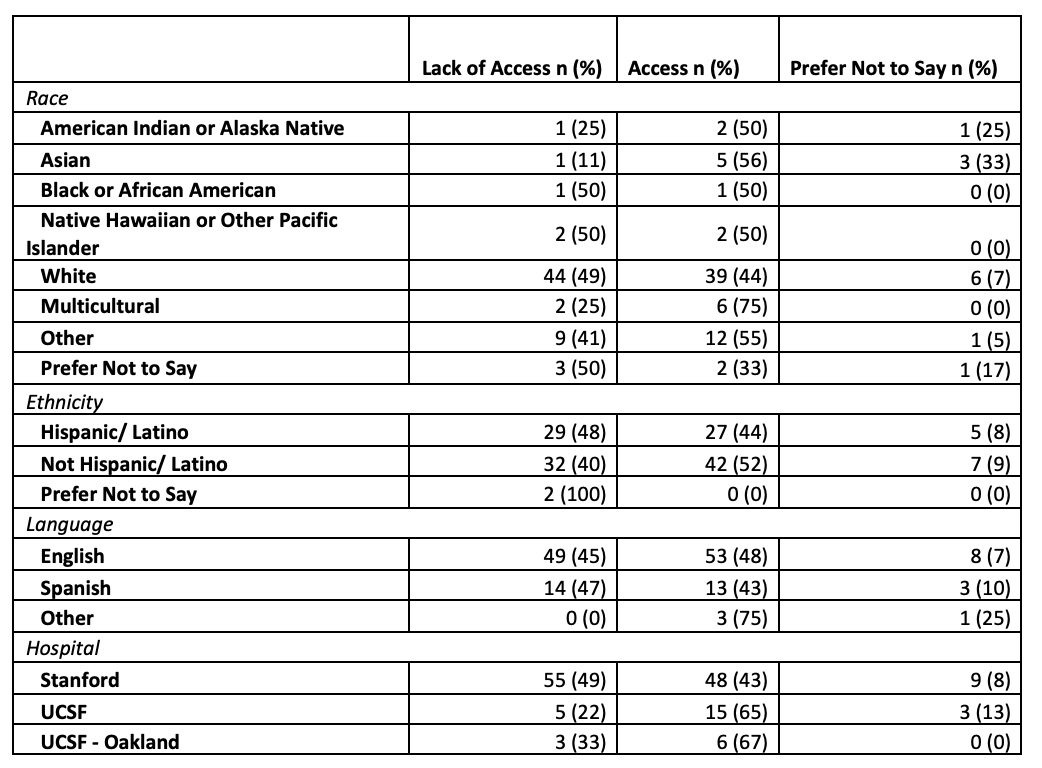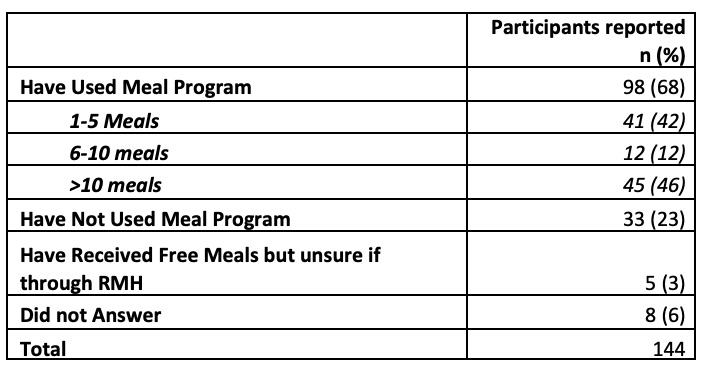Health Equity/Social Determinants of Health
Health Equity/Social Determinants of Health 3
547 - Hunger in the Hospital: Assessing Inpatient Food Insecurity and a Program to Address It
Publication Number: 547.118

Meghan J. Schmitt, MD (she/her/hers)
Pediatrics Resident
Lucile Packard Children's Hospital Stanford
Redwood City, California, United States
Presenting Author(s)
Background:
Prevalence of inpatient food insecurity has been found to exceed that of household food insecurity. The Ronald McDonald House Charities Bay Area (RMH) runs a meal program to address inpatient food insecurity, but the program has not been studied.
Objective:
This study aims to examine 1) prevalence of food insecurity and barriers to food access among caregivers in children’s hospitals, 2) use and impacts of the RMH meal program in addressing food insecurity, and 3) opportunities for improvement in the meal program.
Design/Methods: A mixed methods study was conducted at Stanford University in partnership with RMH in 2022. Spanish and English surveys were distributed at three Bay Area children’s hospitals via email and in-person during meals. Caregiver participants completed a survey with data on demographics, food insecurity, and meal program use, impacts, and barriers. Participants were given the option to complete a confidential phone interview to further explore effects of inpatient food insecurity and impacts of the RMH meal program. Data were analyzed with Excel and Dedoose qualitative software.
Results: A total of 144 caregivers completed the survey, of which 112 (78%) were from Stanford, 23 (16%) from UCSF, and 9 (6%) from UCSF-Oakland. Thirty (21%) caregivers identified as Spanish speaking. Sixty-one (42%) identified as Hispanic, Latino, or of Spanish origin. Eighty-one (56%) reported household food insecurity (Table 1). Sixty-three (44%) reported in-hospital lack of access to food (Table 2). Ninety-eight (68%) reported having used the RMH meal program (Table 3). Qualitative interviews with a sub-set of caregivers (n=31) revealed many barriers to inpatient food access including cost of hospital food and not wanting to leave their child’s bedside, among others. The most commonly reported effects were poor caregiver mental and physical health and poor decision-making. The most commonly reported benefits of the RMH meal program were reducing stress by providing a guaranteed meal, allowing caregivers to be more present for their child, and improving caregiver well-being. The most commonly reported barriers to the meal program were limited hours, no option of meal delivery, and limited dietary options.
Conclusion(s): There is a high prevalence of food insecurity among caregivers in children’s hospitals in the Bay Area with many negative effects. RMH is addressing food insecurity in meaningful ways through the meal program with benefits to both caregivers and pediatric patients. Even so, there are opportunities for improvement in the meal program in order to further increase access and optimize impact.

.jpg)
